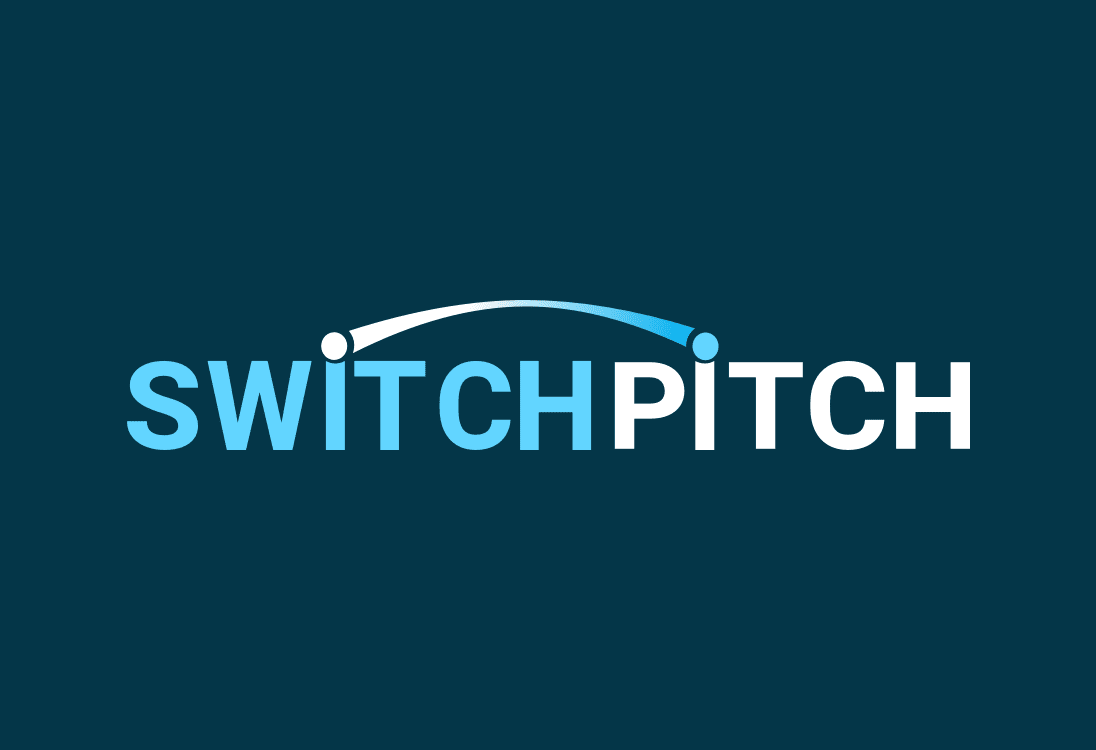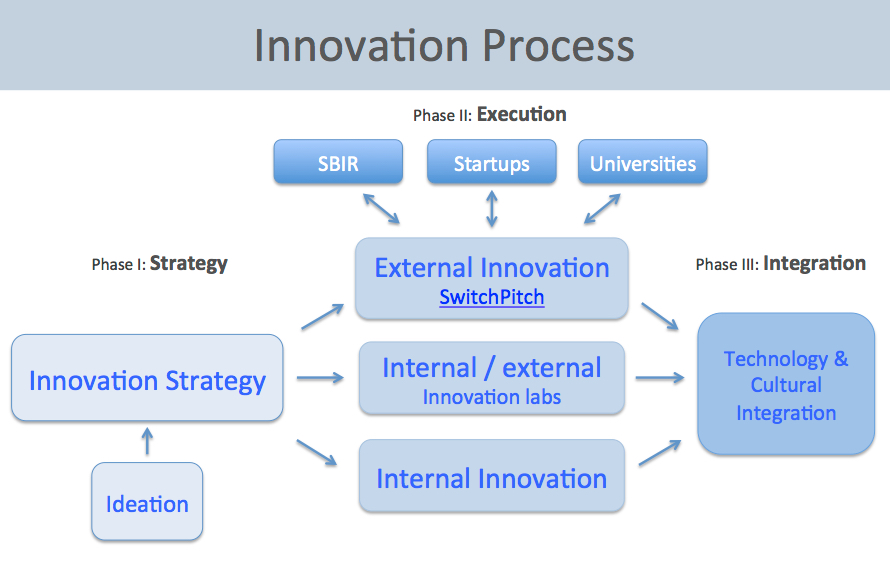
We’ve covered the innovation landscape in prior posts, but today’s post deals with the innovation components within large companies. Where the process starts and ends, and how it is defined and implemented, are all important pieces in determining innovation program components.
Where innovation starts
The need to innovate tends to start with senior executives – who make broad proclamations and set broad innovation goals, according to a 2014 study by the Harvard Business Review. From there, a team is often tasked with defining strategy and tactics, defining goals and how those goals tie into broader corporate initiatives.
Most corporate innovation programs start by defining a strategy. Through workshops, roadmaps and meetings with other executives, strategy’s shape starts to form.
Outside consultancies – management consulting / innovation-specific – are frequently tapped to formulate a strategy. Agencies like Glacier Point in Aerospace & Defense and inCode – whose partners helped formulate the successful AT&T Foundry program – work with a host of clients to develop and implement innovation strategy.
Strategic plans frequently start with a consistent way to tap new ideas from internal and external stakeholders. Ideation platforms like Betterific and IdeaScale aggregate ideas from employees, customers or other relevant parties.
Executing on ideas
To execute on the innovation needs, corporations have several channels to pursue:
- Internal innovation
- Innovation labs (internal / external)
- External innovation
To manage internal innovation execution, companies use tools like Alpha to get to an MVP to determine initial results. From there, iterating will produce more reliable results based on feedback.
Supply chain innovation is a less common source for exploring innovation, however consulting companies like Tenzing are providing tangible results by turning to supply chain partners for innovation solutions.
External innovation is a big driver of new initiatives. Managing the external innovation process requires a broad view of the innovation landscape, including startups, government grant recipients, university technology and more. Platforms like SwitchPitch’s external innovation management platform make identifying sources, tracking internal communications and forming partnerships easy and efficient.
External innovation can take a few forms: Corporate innovation labs / accelerator programs are gaining popularity – allowing internal resources to mix with external solutions in an enterprise-controlled environment. Key to this approach is ensuring a clear and consistent communications channel between the labs and operating units. Without this communication, innovation often dies when transitioning between the lab environment and operating divisions.
The prevailing management tools are internal CRMs and shared spreadsheets; however these tools come with complications – like ease of adding startups to track and shareability of accurate information and data.
To ensure external innovative technologies and solutions are effectively implemented, an emerging group of service providers focused on innovation integration is developing. These firms help enterprises work with startups or other external solutions – handling the technology integration / testing and the cultural differences between the two partners. Scaled Markets manages technology integrations; Opportu works with enterprises on cultural integration of startup partnerships.
Conclusion
Corporate innovation’s effectiveness depends greatly on how strategies are implemented and tied to overall corporate goals / initiatives. Innovation trends come and go, but the fundamentals of innovation do not change. Companies taking a long view on strategy, with flexibility on tactics, are the ones succeeding.



